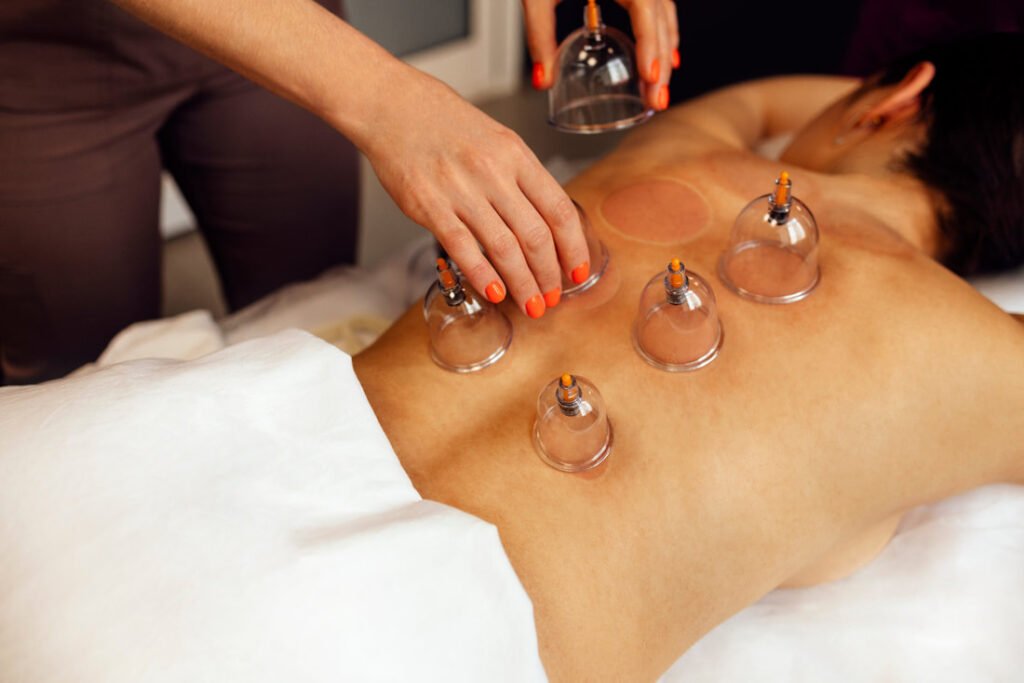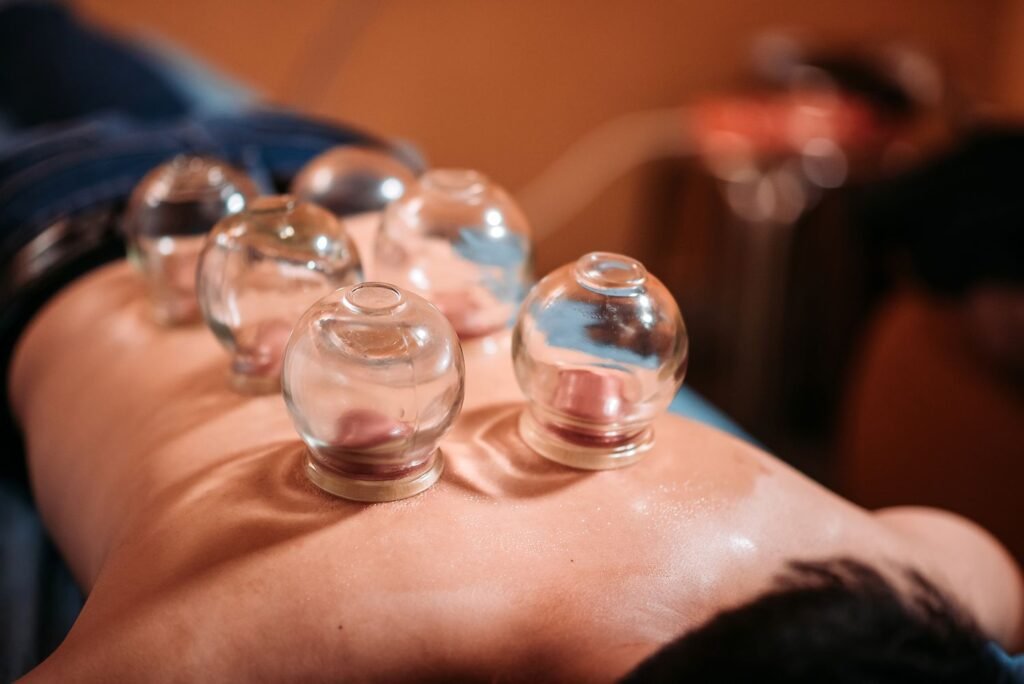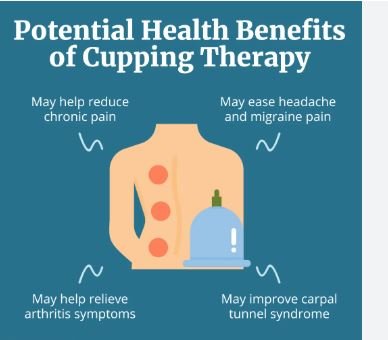Deep Tissue Massage, Physiotherapy & Dry Cupping: Unlocking Posture, Performance, and Recovery
Feel knotted-up after a long week? Deep tissue massage and physiotherapy—plus dry cupping—just might turn your back into a happy playground.[1][2][3]

Introduction
I’ll never forget my first dry cupping session—after days of sedentary work and weight training, my upper back felt like a sack of boulders. Five minutes in, with those cups sporting suction like a hungry octopus, tension began to melt and my shoulder blades felt almost springy (okay, not quite Cirque du Soleil, but close enough). Ever tried something that looks so odd, yet leaves you feeling strangely limber?[2][4]
Expert Insight
“Dry cupping is particularly useful for athletes plagued by recurring back pain or restricted movement—it accelerates tissue healing and relieves stubborn knots faster than most expect,” explains Sara Pesut, PT, DPT, University Hospitals.[4]
What Is Dry Cupping?

Dry cupping involves placing specialized cups (usually plastic or silicone) across the back, creating negative pressure that lifts the skin and underlying fascia—without breaking the skin (no vampires invited). It’s been a staple in traditional medicine for centuries, but in the last decade, it’s caught the attention of physiotherapists and sports massage therapists seeking a drug-free, movement-first solution.[5][6][1][4]
How Deep Tissue Massage Complements Cupping
Deep tissue massage reaches those stubborn inner muscle layers, while cupping enhances blood flow and drains metabolic waste—yes, even the lingering “desk job toxins.” This combo can turbocharge muscle recovery and range of motion for both athletes and sedentary pros.[7][8]
The Science Behind Relief
Improved Circulation & Pain Relief

Cupping’s suction draws blood toward the skin’s surface, flooding tight muscles with fresh oxygen. The result? Enhanced healing, reduced inflammation, and a higher pain threshold—like upgrading your body’s plumbing system. Deep tissue massage isn’t just about brute force; it’s calculated pressure that undoes micro-tears, targets trigger points, and ferrets out pesky areas of soreness.[3][8][9][1]
- Key benefits include:
- Decreased soreness and inflammation
- Faster post-exercise recovery
Detoxification & Injury Prevention
Besides relaxation, regular dry cupping sessions help flush out leftover metabolic junk and support the lymphatic system, reducing the risk of persistent injuries—just what the overtrained weekend warrior or the under-moved desk jockey needs.[11][9]
For Whom—and How?
Sports Professionals & Sedentary Desk-dwellers
Physiotherapy clinics often blend cupping and deep tissue massage, boosting athletic performance and tackling office-induced “tech neck.” Sports pros marvel at quicker recovery and improved flexibility, but even office workers battling postural strain or shoulder tension can benefit.[6][12][8]
Sports Massage Meets Flexibility
Sports massage integrates cupping for targeted relief—especially after competition or heavy training. By kneading and mobilizing soft tissues and then applying suction, therapists have found a double-whammy effect: reduced muscle tightness and enhanced joint range of motion.[8][13][7][11]
Case Study: Postural Reboot
Consider the case of a 24-year-old bartender plagued by rounded shoulders and recurring neck tightness. After integrating sports massage and dry cupping, he noticed not only improved posture but a marked decrease in headaches and upper back discomfort—plus a nifty bonus: fewer complaints during night shifts. No more slumping at the bar (well, except on weekends).[14][15]
Actionable Takeaways
Ready to give it a whirl—or rather, a suction? Pros and non-athletes alike can try:
- Scheduling bi-weekly sessions post-training or long workdays
- Requesting both deep tissue massage and dry cupping for synergistic results
- Pairing with stretching or resistance training for maximum recovery
- Seeking a clinic where physiotherapists and massage therapists collaborate
- Monitoring for skin reactions (bruising fades fast; if it doesn’t, scrutinize your provider)[3][8][4]
(Pro tip: Always tell your therapist about medications, injuries, or goals—communication beats guesswork.)
Conclusion
Whether competing on the pitch or hunched over a keyboard, deep tissue massage, physiotherapy, and dry cupping offer effective tools for back pain, faster recovery, and improved movement. So why not let those cups do their thing? After all, you can’t wind back the clock— but you can unwind your back.[9][10][11]
Ready to get personalized relief? Book your sports massage session today and experience neck pain relief firsthand.
Click here to book a specialist Naturopathic Practitioner.
https://mysportinjury.janeapp.co.uk/#/staff_member/8
References
- https://my.clevelandclinic.org/health/treatments/16554-cupping
- https://bristolphysio.com/dry-cupping/
- https://www.physiopattern.com/sports-deep-tissue-massage
- https://www.uhhospitals.org/blog/articles/2021/02/dry-cupping-therapy-does-it-really-help
- https://www.webmd.com/balance/cupping-therapy
- https://www.rehabcophysio.com/blogs/physiotherapy/the-benefits-of-cupping-therapy-in-physiotherapy-how-it-can-aid-your-recovery
- https://pmc.ncbi.nlm.nih.gov/articles/PMC12140169/
- https://www.weaverphysio.com/sports-massage
- https://bodytonicclinic.co.uk/blog/benefits-of-cupping-therapy-for-back-pain/
- https://themovementschopp.com/cupping-for-back-pain/

